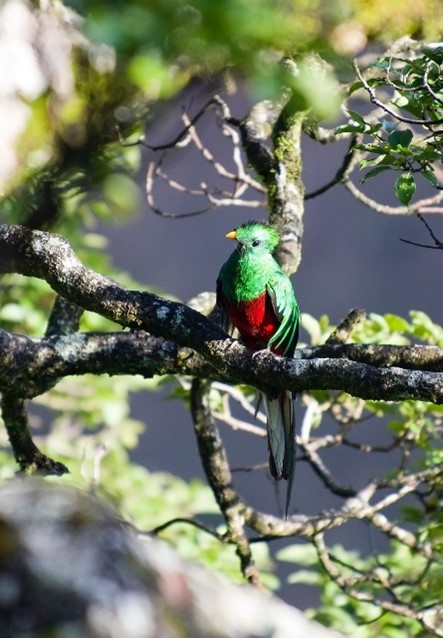
Whether it’s the tropical rainforests of Brazil, the vast grasslands of Argentina, or the freezing biome of the Andes mountains, Latin America is teeming with different kinds of life of all shapes and sizes. When picturing the biodiversity of Latin America, the Amazon Rainforest is most likely to come to mind first. With the lengthy Amazon River cutting straight through the middle of the lush forest, the abundance of life here is seemingly endless. There are jaguars, macaws, dolphins, giant centipedes, ocelots, anacondas, anteaters, capybaras, cougars, turtles, monkeys, and the most beautiful butterflies you’ve ever seen. And this is only to name a few.
As spectacular as this may sound, this is far from the only place in Latin America to offer this level of diversity. The country of Guatemala is located in Central America sandwiched in between Mexico on its northern end and El Salvador and Honduras on its southern end. About one third of Guatemala’s natural land has remained untouched by humans. In fact, the country actually has the highest number of endemic species out of all other Central American countries with 16,000 native plant, animal, and insect species living there.
Some of the most eye-catching plant and animal species are native to Guatemala. The Yellow-Naped Amazon Parrot (Amazona auropalliata) is endemic to most of Central America. This colorful bird has bright green feathers with random flashes of different reds and blues, and most have a yellow patch of feathers on the back of their head, giving them their name. Here at the Sawgrass Nature Center, we have two Yellow-Naped Amazon Parrots who were both surrendered pets. Their names are Sinbad and Alice.
Perhaps an even more fascinating species of bird native to Guatemala is the Resplendent Quetzal (Pharomachrus mocinno). The bird is colored a dark, almost iridescent green color with a red belly and a short and cute yellow beak. The males have a long pluming tail of green and white feathers to attract a female partner. The Resplendent Quetzal can be found in a central region of Guatemala along a mountain range known as Sierras de las Minas. The habitats here are commonly known as “cloud forests” because they are forests found at high altitudes filled with mist and fog.
In ancient Maya culture, quetzal feathers were highly prized and symbolized power, wealth, and connection to the divine. The feathers were used to adorn the headdresses of royalty and priests, representing the god Quetzalcoatl and serving as a symbol of fertility and abundance.
This bird acts as a great representation of the beautiful wildlife Guatemala has to offer, so much so, that in 1871 the Resplendent Quetzal was deemed the national bird of Guatemala and can be seen on the Guatemalan flag and coat of arms today. The Guatemalan Quetzal (GTQ) is also the national currency of the country.
Guatemala is one of the 36 biodiversity hotspots all around the world with a plethora of species besides these beautiful birds. Some of these unique Guatemalan fauna include the Black Howler Monkey (Alouatta pigra), the Spiny-tailed Iguana (Ctenosaura pectinate), the Poison Dart Frog (Dendrobates auratus), the Baird’s Tapir (Tapirus bairdii), the Long-tailed Weasel (Mustela frenata quichensis), the White-tailed Deer (Odocoileus virginianus), the Guatemalan Goby (Gobiomorus dormitor), and the Maya Cichlid (Cichlasoma urophthalmus). Because of this biodiversity hotspot title, the wild areas of Guatemala are considered critical ecosystems, which ensures that the diversity and culture of Guatemala must be preserved and sustained. September 15th is Guatemala’s Independence Day so this is the perfect time to learn more about this astonishing country and find out some ways you can help protect its native culture and biodiversity. Guatemala is a must-see bucket list item, so if you ever get the chance to visit, go check it out!